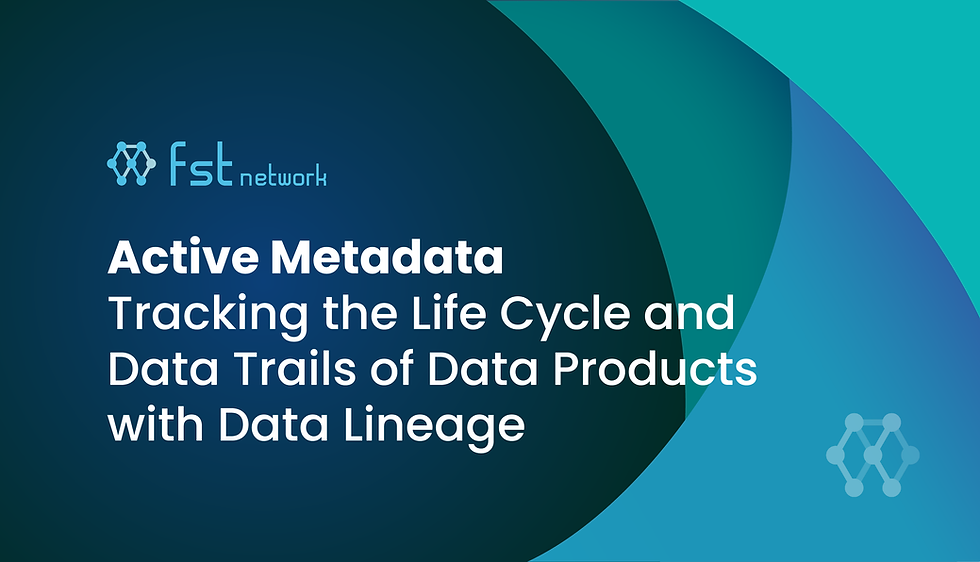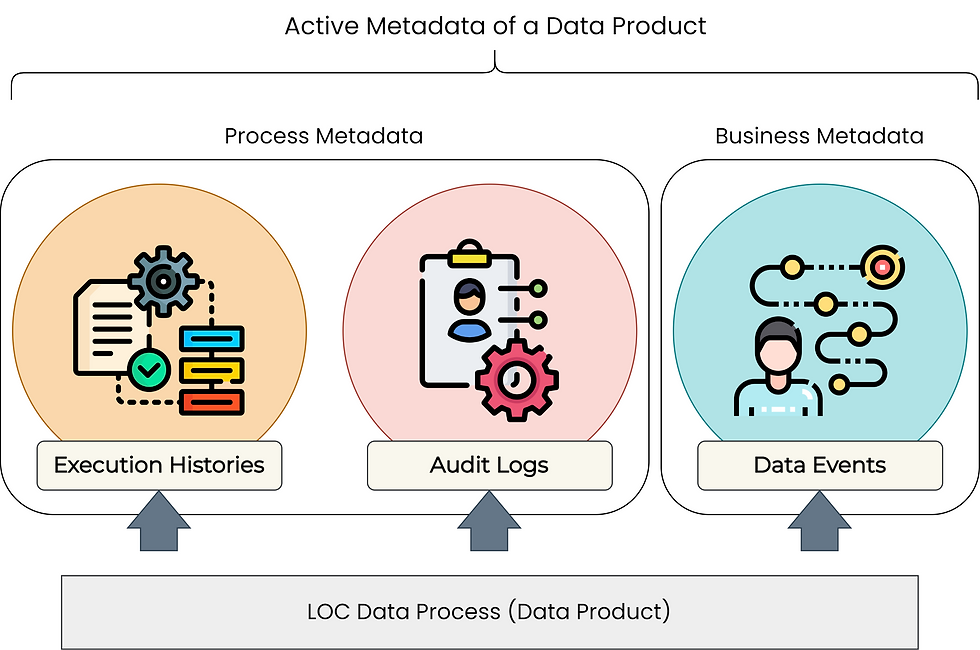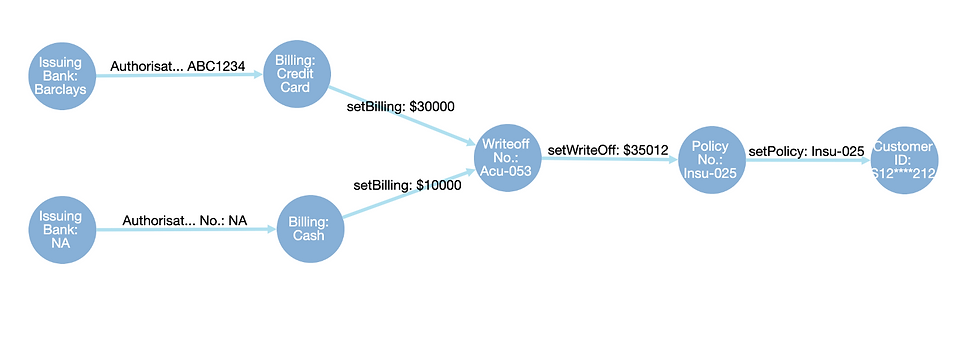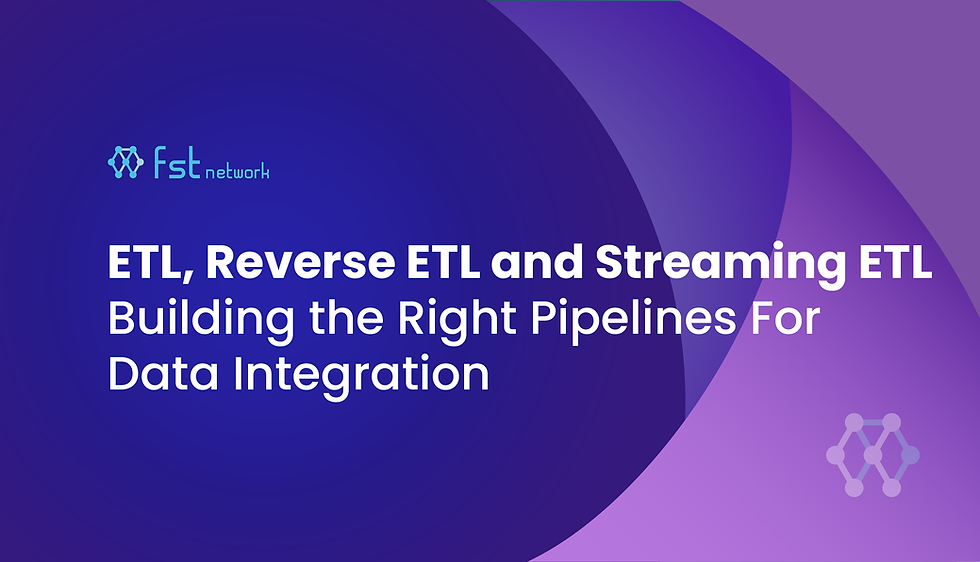Active Metadata: Tracking the Life Cycle and Data Trails of Data Products with Data Lineage
- FST Network

- Oct 11, 2022
- 6 min read
Updated: Dec 9, 2022
To find where are your data from and where exactly did them go - by letting themselves reporting to you.

What is Metadata?
In Zhamak Dehghani’s works about data mesh, metadata is part of a data product (a API-like data pipeline running on some infrastructure) and was described as “information about data“ which can make data useful.
In the world of analytical data (which is the focus of many concepts and practises, including data mesh, data fabric and business intelligence), metadata is just as valuable - for it provides the context of how data is used, and from which you can extract insights for key business decisions or improvements. Metadata can also be used for machine learning, helping to make AI models explainable and responsible.
There are three major types of metadata:
Technical or structural metadata: technical description of a data object - database table schema, data type or model, etc. which decides how a data can be operated and transformed.
Process or administrative metadata: how and when a data is generated and used, as well as its access control and performance, etc. These details are for stewardship and maintenance. The history of the data usage is referred as its lineage.
Business or descriptive metadata: the value that a data have to its organisation and users, in the forms like names, labels, annotations - which supports discoverability and categorisation.
Active Metadata and Data Lineage
One of the most common metadata tools are data catalogues, and one key purpose of them is data discovery, which enables users to quickly search and get data across separated data silos. This goal is overlapped with data virtualisation and data fabric. It also eliminates the need to duplicate data around your company and waste more resources.
However, this is not the only thing you can do with metadata. What if you actively generate new meanings from them? Metadata are, after all, data.
In 2021, Gartner had dropped metadata management from their Magic Quadrant report and replaced with active metadata management. It is defined as below:
“Active” metadata attempts to recalibrate this idea by making metadata a computational problem rather than a managerial one. It shifts the process of metadata management from being a passive, static operation to an active, continuous one. – Forbes, Active Metadata: What It Is, And Why It Matters (2022)
There are, in fact, many interpretations about how exactly is an “active” metadata. Some believe machine learning has to be leveraged - but in most cases any automated processing and analysing can count as active metadata management.
On many data catalogue tools, one common form of active metadata is data lineages. A data lineage indicates what and where the data source is, where data moves to over time, and who with what privilege used them, etc. Along with audit trails, you can validate how trustworthy a data is and was a data usage in compliance with your data policy.
Depending on how metadata is generated, it can also be classified as self-contained or by external parsing. The major data catalogue platforms are naturally the latter.
Types of Data Lineage
There are also three major types of data lineages:
Pattern-based lineage: the lineage is based on structural metadata, for example, database tables, without any codes involved. This lineage reads the relationship between how data are stored.
Code- or logic-based lineage: this lineage is based on code logic - for example, SQL scripts or workflow definitions - to understand how they would transform or manipulate data.
Log- or runtime-based lineage: this lineage is based on metadata generated by executing data logic code, which can be used to find out how the code are actually executed and what data pipelines have been invoked by users.
Data Mesh: Shifting Lineage to Runtime
Many existing data catalogue tools relies on centralised ETL (Extract-Transform-Load) processes or data streaming services. This is a good model for the traditional data warehouse model or separate data silos. However, as we explained in the data mesh introduction, the scale of (big) data has caused bottlenecks in such architecture. Data mesh is about moving the data pipelines toward domain teams and making them into “data products”.
This means in this new decentralised, distributed paradigm, we can no longer only focus on pattern- or code-based lineages: for data products (which are like callable APIs) exists in a virtual plane (data fabric) are the only thing the users want. They would like to know what happened when you invoke a data process, and have it passed anything you want to somewhere.
How LOC Utilise Data Lineage
As a self-serve, serverless platform deeply influenced by the data mesh architecture, FST Network’s Logic Operating Centre (LOC) is all about building data pipelines - data processes - between data sources, sometimes not unlike overpasses or highways.
And unlike other data catalogue tools, LOC does not generate lineages from
these sources. Instead, all the lineages are self-contained and would be generated along with the life cycle of data processes. They can help you to manage and improve your data products better.
We will take a look at some data lineages currently supported in LOC.

Execution Histories
Triggers are external events to invoke LOC data processes (which is an execution containing one or more tasks), including HTTP routes, message queue topics and schedulers. They are deployed by users to pair with specific data processes via their ID.
A trigger itself defines what data processes should be invoked, which is a form of code-based lineage. However, a execution history can tell you what really happened during an actual execution, including where did it failed:
When did the execution happened
Which trigger invoked this execution
What payload did the trigger carry
Tasks in this execution
Data operations performed in each task
The execution histories are a form of process metadata.
Audit Logs
In a platform that implements the data mesh architecture, computational governance is necessary. LOC’s audit logs - audit trails - show a user's action of managing data processes:
Who create/delete a data process at when
Who update a data process (revision) at when
Who deploy/undeploy a data process at when
This captures part of the data processes life cycle and is crucial for the organization’s data governance purposes.
The audit logs are a form of process metadata.
Data Events
LOC also have something different up in its sleeve: data events (or simply events). These are not the same with triggers we’ve mentioned above or Event-Driven Architecture (EDA) events, but a form of runtime metadata generated by the users' code.
In every data process, users can use so-called event store agent to emit or query customised data events:
Event name
Event source
Event target
Additional payload or metadata fields
Each source (data producer) or target (data consumer) is a logical node that can also be other events’ source or target. Together these nodes can form a longer lineage across data processes, which indicates data flow or data trail or an actual business process. This also helps users to track data issues outside separate data pipelines.
These events are a form of business metadata, which can only be defined manually - not exactly self-contained - but once the code is in place, they will be able to generate active metadata by task. This also allows users to capture their business logic much better than pattern- or code-based metadata.
The image below is an actual data lineage displayed in LOC’s user interface, LOC Studio:

An emitted event also contains other metadata:
Date/time of the event (useful for time-series analysis)
The data process and task that emitted the event
The events can also be used for exchanging data between data processes or triggering other data processes - but that will be a topic for another day.
LOC also offers data discovery for triggers and data processes, which is more similar to traditional data catalogues. Triggers themselves are in fact code-based lineages, since they contain the list of data processes that should to be invoked.
Then again, a perfectly fine task may still fail due to various runtime issues - for example, incorrect data payloads or downed databases. Runtime lineages are more dynamic and thus more important to capture insights on a living, running data platform, especially one that pursues the vision of bringing data mesh into your organisation.
FST Network aims to revolutionise the data landscape by creating world's first cloud-native and serverless Data Mesh platform. Logic Operating Centre (LOC) is fully capable to productise and eventify your data, with easy-to-deploy data pipelines that seamlessly connects everything across your organisation, bringing in agile, accessible and trustworthy business insights. The data race is constantly changing and fiercer than ever - but we are there to give you a winning edge.
Icon credits: flaticon.com



شيخ روحاني
رقم شيخ روحاني
شيخ روحاني لجلب الحبيب
الشيخ الروحاني
الشيخ الروحاني
شيخ روحاني سعودي
رقم شيخ روحاني
شيخ روحاني مضمون
Berlinintim
Berlin Intim
جلب الحبيب
سكس العرب
https://www.eljnoub.com/
https://hurenberlin.com/
جلب الحبيب بالشمعة
Want to better understand your photos by examining their hidden data? An online EXIF reader can help you do just that. Every digital photo usually carries this information, detailing the camera's settings at the moment of capture. This includes crucial elements like focal length, exposure compensation, white balance, and metering mode. Accessing this data can be incredibly educational, helping you learn how different settings affect the final image and enabling you to replicate successful results or troubleshoot issues in your photography.
jmkbet
jmkbet
jmkbet
jmkbet
jmkbet
jmkbet
jmkbet
jmkbet
jmkbet
jmkbet
To Upload an image to start viewing its EXIF data, all you need is an online viewer tool. These platforms are designed to quickly parse the metadata embedded within your JPEGs or other image files. This can reveal fascinating details, such as the make and model of the camera and lens used, the precise shutter speed and aperture settings, the ISO sensitivity, whether the flash was used, and even the software used to process the image. It's a powerful way to get under the hood of a photograph and understand its technical origins.
If you're curious to Unlock detailed image data from your photographs, an online EXIF reader is the way to go. This metadata can reveal a wealth of information beyond just what you see visually. You can discover the exact date and time the photo was taken, the specific camera and lens used, exposure settings, whether the flash fired, and much more. It’s a valuable tool for photographers who want to meticulously track their settings or for anyone interested in the technical aspects behind a photograph. It's like a digital fingerprint for your images.